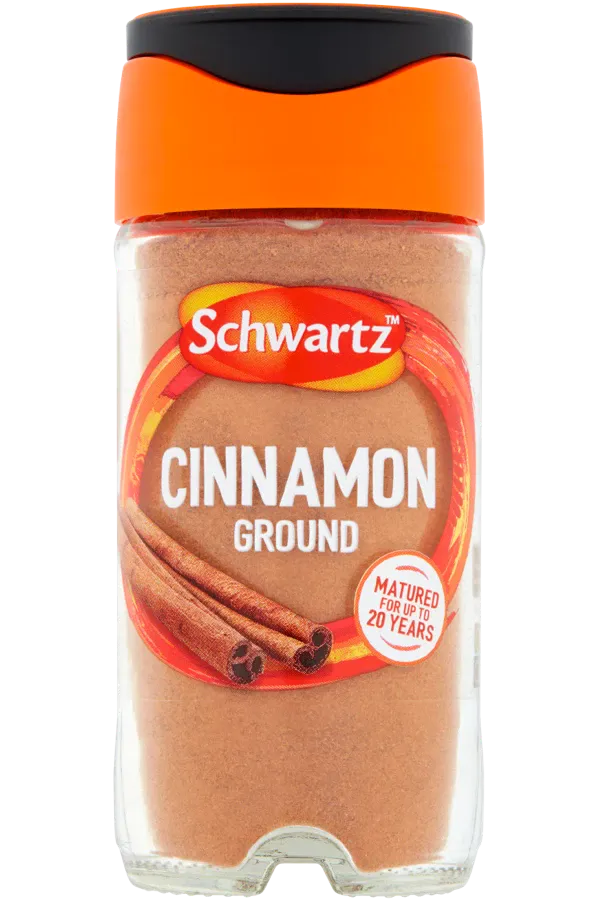Product
Similar Stories
Schwartz Cinnamon has been voted no.1 for baking* - discover what makes it so unique...
Did You Know?
Packed inside the unassuming cinnamon stick is a woody, warming spice just waiting to be unleashed on the senses. Not only is cinnamon famously aromatic and intense, it's also one of the world's oldest spices, with usage first recorded in ancient Egypt. Available both powdered and in stick form, this spice brings a warming twist to both sweet and savoury dishes, so it especially comes into its own in winter. For many, cinnamon is a staple Christmas spice, so it is used in abundance during the festive season in everything from mulled wine to gingerbread.
What does cinnamon taste like?
Sustainably sourced from the central Sumatra region of Indonesia, it can take up to 20 years to develop the high volatile oils that give our cinnamon its warm, sweet and slightly spicy flavour. The bark is especially collected from the bottom of the tree, where the flavour is more intense, and then cut, cleaned and aged on site before it makes its way to be carefully packaged.
Whole cinnamon sticks only have a faint scent when first collected, but once broken or ground down they exude their potent, unmistakeable aroma. A sweet and woody flavour, cinnamon has a slight citrusy note, and its spicy taste is often likened to the powerful punch of cloves. Other than the texture, there's no difference between ground cinnamon and cinnamon sticks in flavour, but it's the way they are used which differs. Sticks are used in much the same way as bay leaves, and aren’t intended to be eaten. Powder on the other hand is used in the mixture.
Best in…
Cinnamon sticks aren't just for mulled wine – they can be used to enliven a wide range of dishes. Try adding them to steamed rice during cooking for a delightfully warming dish, or stir into coffee or chocolate for spice. Sprinkle cinnamon powder over apple pies, cakes and biscuits for a pleasing kick. For a delicious breakfast, dust over hot buttered toast or porridge. Perhaps surprisingly, cinnamon powder works equally well in savoury recipes too – try it in a beef or lamb casserole for further depth of flavour.
Health benefits of cinnamon
A tea brewed with honey and cinnamon could benefit the immune system, and it's traditionally used to combat cold and flu symptoms too. Some believe that cinnamon aids digestion, while others also suggest it could help poor circulation. Our science institute has set out to explore these claims with a number of trials, testing its effect on diabetes and its antioxidant properties. Their article here shows their findings.
History
The first recorded use of cinnamon was in ancient Egypt, but it's also mentioned in the Old Testament as an ingredient of holy anointing oil. It's been used all over the world both as a foodstuff and as a perfume, and its scent proved particularly popular with the Romans. By the Middle Ages though, supply couldn't keep up with demand, sending its value skyward. To feed the masses, European explorers set out to the New World to find cinnamon, but it was only when the Portuguese traders toured Sri Lanka in the early 16th century that a large enough source was found.
Did you know?
- Cinnamic Aldehyde is the principal oil in cinnamon, and is responsible for giving it that distinct spiciness
- Cinnamon Sticks should be an even, soft brown colour
- The paler the bark, the higher the quality of cinnamon
*based on an independent blind taste test with 213 home bakers.

Nutrition
Energy per 100g: 339 KCal
Protein per 100g: 4.7 g
Carbohydrates per 100g: 79.3 g
Fat per 100g: 0.3 g







